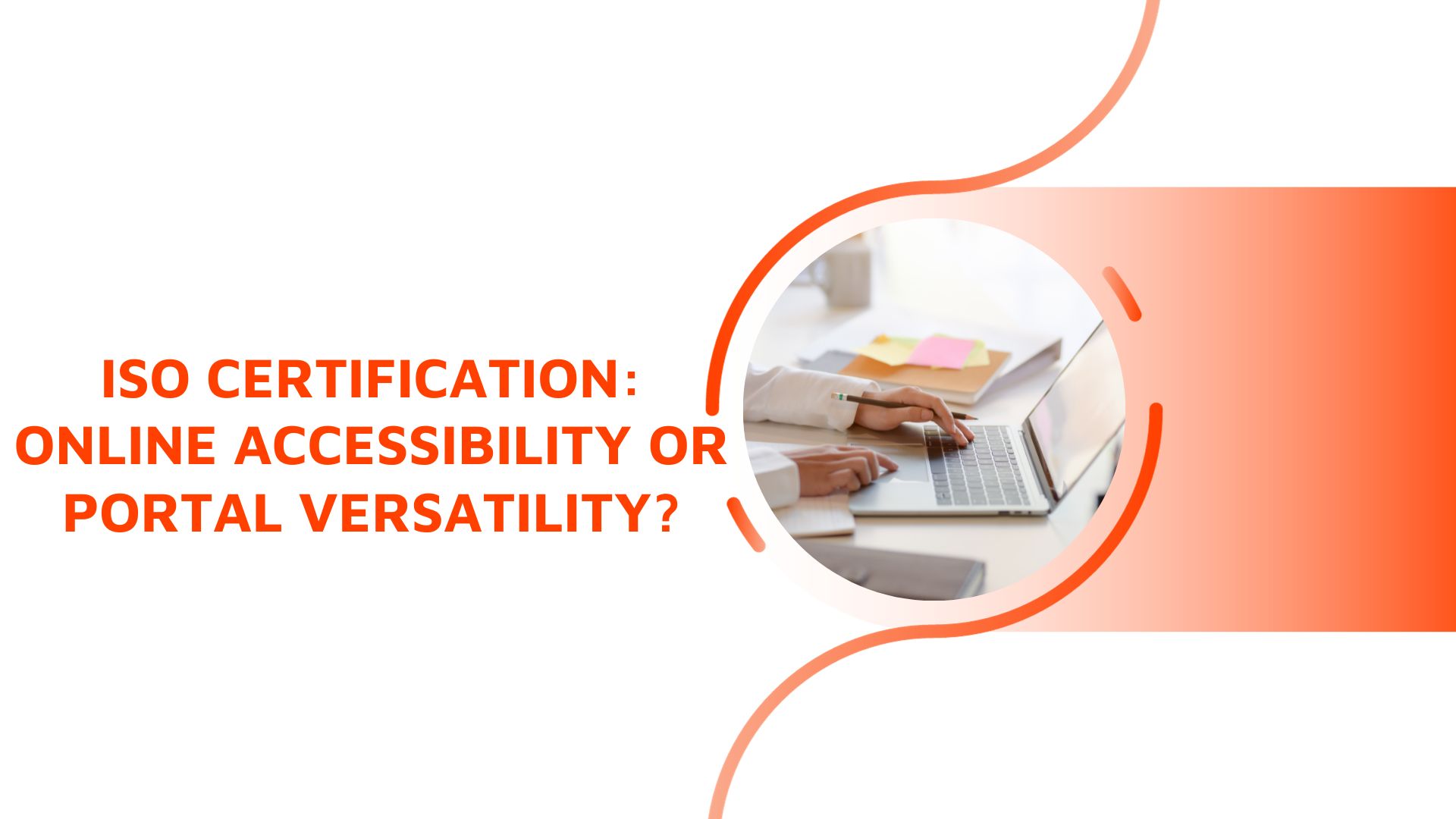Introduction
In a rapidly evolving digital landscape, organizations worldwide are increasingly recognizing the importance of ISO certification for quality management and the broader assurance of compliance with international standards. ISO certifications not only demonstrate a commitment to quality but also bolster an organization’s reputation and competitiveness. With the growing prominence of online accessibility and portal versatility, organizations face a pivotal decision: Should they pursue ISO certification through traditional means or opt for a more modern, digitally-driven approach?
This article delves into the debate surrounding ISO certification, evaluating the merits of both online accessibility and portal versatility as methods for achieving this coveted accreditation. We will explore the key features, advantages, and drawbacks of each approach to help organizations make informed decisions about their ISO certification journey.
The Traditional Approach: ISO Certification through In-person Audits
For many years, the traditional method of obtaining ISO certification involved in-person audits and inspections. A certification body’s auditors would physically visit the organization’s premises, assess their quality management systems, and ensure that the requirements of the relevant ISO standard were met. This approach had several notable advantages:
In-depth Evaluation:
In-person audits allowed for a comprehensive examination of an organization’s operations, from infrastructure and documentation to employee practices and management systems.
Face-to-Face Interaction:
Auditors could engage in direct conversations with employees, fostering a deeper understanding of the organization’s culture, challenges, and aspirations.
Tangible Verification:
The physical presence of auditors provided a tangible sense of validation for both the organization and its stakeholders.
However, the traditional approach also had its limitations:
Logistical Challenges:
In-person audits required significant planning and coordination, often leading to delays and disruptions for the organization.
Costs and Resource Intensity:
The expenses associated with on-site audits, including travel and accommodation, could be substantial.
Subjectivity:
Auditors’ judgments could sometimes be influenced by personal biases or differing interpretations of standards.
The Modern Approach:
ISO Certification through Online Accessibility and Portal Versatility
In recent years, the digital transformation of ISO certification has gained momentum, with many certification bodies now offering the option of online accessibility and portal versatility. This approach leverages technology to facilitate remote assessments, communication, and documentation management. Here are some of the key advantages of this approach:
Convenience:
Organizations can undergo certification assessments without the need for auditors to physically visit their premises. This minimizes disruptions to daily operations.
Cost-Effectiveness:
The online approach often reduces costs related to travel, accommodation, and on-site audit logistics.
Time Efficiency:
Remote assessments can be scheduled more flexibly, reducing certification lead times.
Consistency:
Digital tools and portals provide a standardized approach, reducing the potential for subjectivity.
However, online accessibility and portal versatility come with their own set of challenges:
Security and Privacy Concerns:
Handling sensitive data and documentation online raises concerns about data security and privacy.
Lack of Physical Presence:
Auditors miss the opportunity for face-to-face interaction and an in-depth understanding of the organization’s culture.
Digital Proficiency:
Organizations must be technologically adept to navigate the certification process online effectively.
Making the Decision: Finding the Right Balance
Choosing between online accessibility and portal versatility or traditional in-person audits for ISO certification depends on the unique needs and circumstances of each organization. It is important to consider factors such as the nature of the organization’s operations, its technological capabilities, and the level of security required for its data.
Hybrid approaches are also emerging, combining elements of both traditional and digital methods to strike a balance between in-person verification and remote convenience. These approaches aim to harness the strengths of each method while mitigating their respective weaknesses.
Industry and Regulatory Requirements:
The industry in which an organization operates can influence the choice of certification method. Some industries or specific regulations may require a more traditional, on-site audit to ensure compliance with sector-specific standards.
Geographical Spread:
The geographic distribution of an organization’s facilities or branches can be a key factor. Online accessibility is especially advantageous for multinational organizations with locations spread across the globe, making on-site audits logistically challenging.
Staff Training and Preparedness:
For remote certification methods, it’s essential to ensure that your staff is adequately trained and prepared to work within digital platforms and provide the necessary documentation in a timely and accurate manner.
Customer Expectations:
Consider the expectations of your customers and stakeholders. Some may value the traditional, in-person approach as a sign of commitment to quality, while others may appreciate the efficiency of remote certification.
Document Management Systems:
Organizations should assess their document management systems and their ability to securely store and share documents online. Strong data security measures should be in place to safeguard sensitive information.
Audit Frequency and Recertification:
The frequency at which your organization must be audited and recertified can affect your decision. More frequent audits may benefit from the efficiencies of online accessibility, while less frequent ones may still warrant traditional audits.
Risk Tolerance:
The level of risk an organization is willing to accept is a crucial consideration. Traditional audits might provide a stronger sense of assurance but come with their own risks, such as disruptions and potential biases. Online accessibility reduces some of these risks but introduces new ones related to data security.
Continuous Improvement:
ISO certification isn’t just a one-time event; it’s about continuous improvement. Organizations should select the method that best supports their commitment to ongoing quality enhancement and adherence to standards.
Third-Party Certification Bodies:
Consider the reputation, credibility, and accreditation of the third-party certification body you plan to engage with. Some organizations might have a preferred certification body with which they have established trust over the years. In such cases, the choice of certification method may be influenced by the practices and preferences of that particular body.
Conclusion
The debate over ISO certification methods – online accessibility or portal versatility versus traditional in-person audits – highlights the evolving nature of quality management in the digital age. The choice an organization makes should align with its goals, capabilities, and risk tolerance. While online accessibility offers convenience and cost savings, traditional audits provide in-depth scrutiny and personal engagement.
Ultimately, the pursuit of ISO certification is a commitment to quality and continuous improvement. Whether achieved through a screen or a handshake, the value of certification lies in its ability to enhance an organization’s competitiveness, reputation, and adherence to international standards. As organizations strive for excellence, they must carefully weigh the benefits and trade-offs of their chosen ISO certification approach in the context of the modern business landscape.


